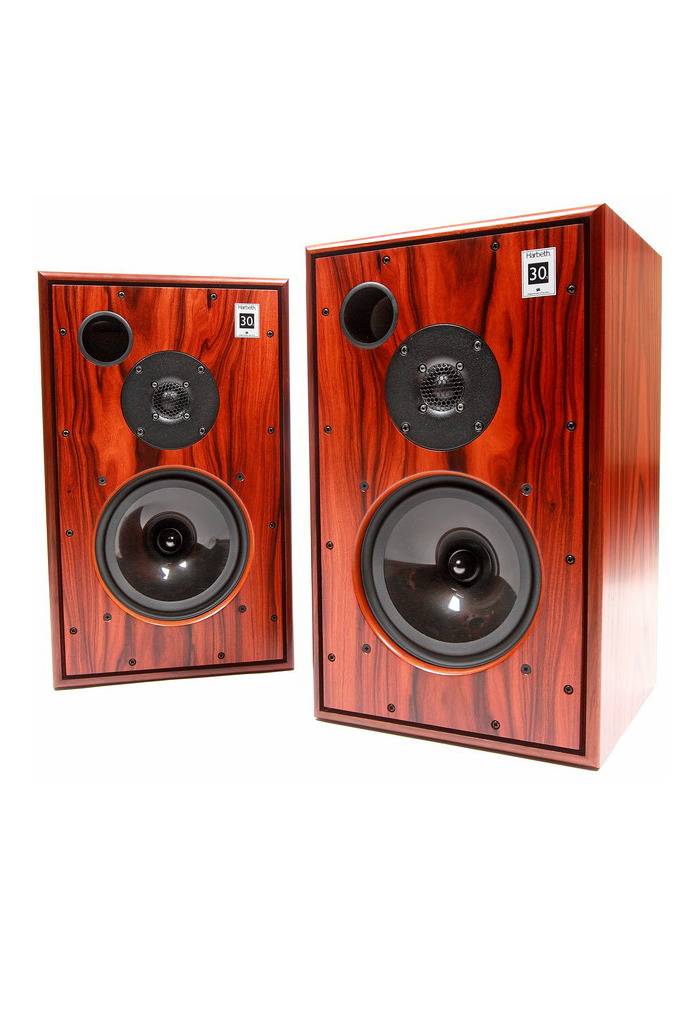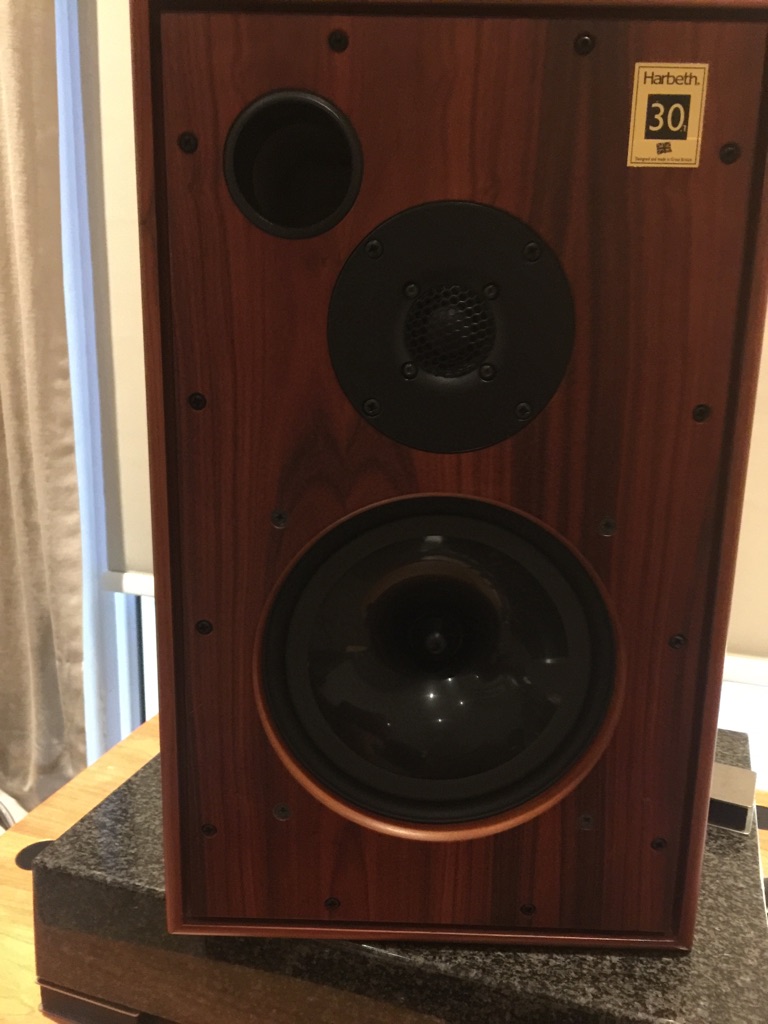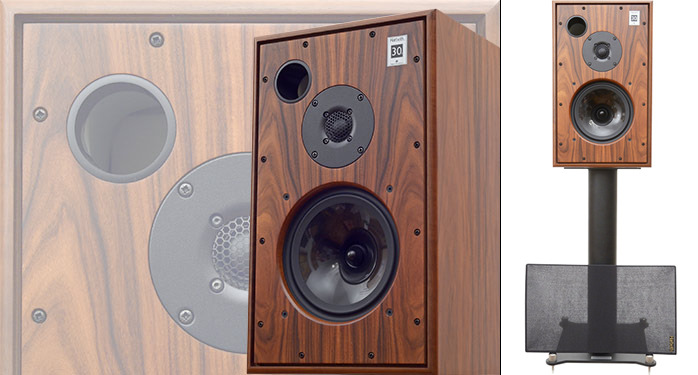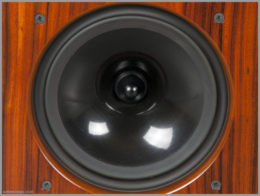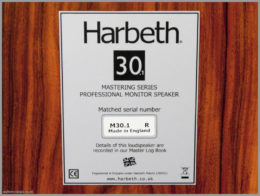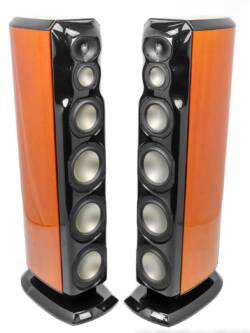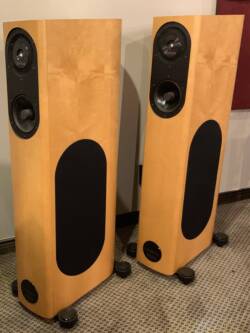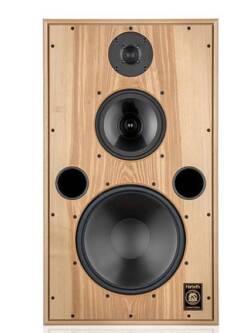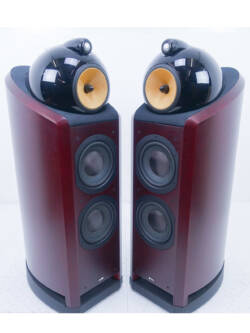Harbeth 30.1 Bookshelf Speakers
Original price was: R88,000.00.R25,000.00Current price is: R25,000.00.
LOOK & FEEL OF HARBETH MONITOR 30.1
Harbeth M30.1 are made from relatively thin walls made of veneered MDF with two side walls braced together. It is a BBC originated design, where front and rear panels are screwed on, and all the walls inside are dampened with bitumen pads. The idea behind this design is not only to reduce transfer of the resonances between the enclosure panels, but also to tune them so they are way below critical midband frequencies. I recall reading somewhere that the whole idea behind screwed on front and real panels originated when BBC engineers were auditioning their speaker prototypes and realised that some cabinets, despite the same construction sounded better than others. When they investigated it, they realised that that enclosures that sounded better, did not have their panels glued properly. This was the beginning of the screwed on front and real panels design.
But back to the actual speakers. The veneer on each enclosure is matched, and then both enclosures are matched with each other. It has a satin varnish finish, you can see and feel the wood texture – very nice. There is a single set of gold plated binding posts – nothing fancy but it shows the down-to-earth approach of the designer. The grills are an interesting design – thin metal frame with fabric stretched over it. The frame slides into a narrow grove in the front panel of the speakers and it is held there purely by friction. I kind of like it, because it prevents side reflections that you may find it in more traditional thick wooden grilles, but it is not a great design from a usability point of view. Although, these are not really intended for removal. I’ve seen people removing these by inserting paper clips or other sharp objects between the metal frame and groove, and damaging the fabric as a consequence. I found that removing these with neodymium magnets is by far the easiest and least invasive method.
Both the Seas tweeter and the Harbeth mid-bass unit appear to be very well made. The crossover is rather complicated and appears to be made of good quality components, but you will not find huge film capacitors or large air-core inductors here.
Overall, Harbeth Monitor 30.1 are very beautiful, especially without the grills. I feel that I have to mention that the speakers where designed and tuned with the grilles on, and this is how they were supposed to be listened to. Apart from musical enjoyment, I like my HiFi equipment to be ascetically pleasing too and I wish that Harbeth M30.1 speakers were designed with an intention of using them without the grilles.
SOUND OF HARBETH M30.1 SPEAKERS
I started my listening tests by putting the Harbeth M30.1 next to my Yamaha NS-1000M and switching between two and adjusting the volume to accommodate the different speaker sensitivities. My initial impression was that Harbeths do not sound as airy, detailed and impressive as my Yamahas. However, we are creatures of habit, and often the familiar sound is perceived as a better sound. I therefore moved the big Yamahas out of the way, and I set up the Harbeth Monitor 30.1 in the correct positions. Interestingly, after 15 minutes the feeling that 30.1s are lacking airiness or the ‘spark’ of the NS-1000 disappeared. The more I listened to them, the more I liked what I was hearing.
One of the things that impressed me about them was the quality of their bass, especially considering their compact size. They never made me feel that I am lacking anything in the extension of the bass, despite the frequency response rolling off below 50Hz. Clearly they do not have as much low-end bass as much larger speakers, but providing that you don’t do side-by-side comparisons, you will not feel that Harbeth M30.1 miss anything in this region. Another thing that impressed me was the amount of details in the bass as well as the kick in the upper bass – both much better than on my Yamahas. It was much easier to follow double bass and bass guitars and tell the difference between the notes in this region. If I was to criticise anything in this area, it would be the slight bump in the upper bass (possibly a typical “knee” in the frequency response, as a result of bass reflex port tuning?). This happened to correlate with the standing waves are in my room, and sometimes causes a slightly boomy sound on certain instruments. Saying that, you don’t really notice this extra boost, unless you compare the M30.1s with speakers that are flatter in this area. Moreover, this does not seem to be a problem in my friend’s room. Thus I would not hold it against the speakers as it seems to be room depended.
The midrange and treble are of a very high quality. Voices sound very real but towards the warmer side of natural, which is a quality that I very much like. This quality seems to suit 80% of the albums I have, and makes them sound more full and rich, and generally easier to listen to.
Stringed instruments sound very good too, but not as real as some of the large dual concentric Tannoy speakers that I experienced. This is easy to notice when listening to tracks such as Where Shall I Be by Eric Bibb from the Spirit & The Blues album. In my experience, certain speakers that tend to be brighter, seem to sound more real when reproducing the sound of stringed instruments such as guitars (especially their top frequencies), however, not as real at reproducing the body of the musical instrument. It raises a question, is there one speaker that can be best at everything? This is not a criticism of these Harbeths – it is part of their character. The sound of stringed instruments is just richer. If most of your music is well recorded and you prefer more airy sound, perhaps the SHL5 Plus or P3ESR 40th Anniversary would be better suited to your taste, however, my personal preference would be the M30.1s.
The warmth of the Harbeth Monitor 30.1 sound is also noticeable on brass instruments, and in my opinion enhances their sound and makes them appear more life-like. I absolutely love tracks like My Romance by Ben Webster playing through these speakers.
Clapping sounds very real, which often adds to the 3D sound stage illusion that these speakers are capable of creating given the right conditions (enough distance from the side walls and wall behind the speakers). It is not only the width but also the depth of the soundstage illusion that is impressive. All of this contributes to the very immersive and engaging experience when playing music through the Harbeth M30.1s.
A lot of HiFi speakers tend to prioritise the perceived clarity (frequently a result of slightly boosted treble) over the naturalness. This often results in speakers that sound impressive on the first listen with well recorded music, but become fatiguing after a while, especially if the recording quality is anything but perfect. In contrast, Harbeth Monitor 30.1 do not blow you away on the first listening but grow on you over time. They are very well balanced, extremely natural, with outstanding midrange clarity and very impressive bottom end. However, their biggest attribute is the fact that they are not fatiguing and indeed encourage longer listening sessions. Perhaps not as forgiving as the Harbeth C7ES-3 but forgiving enough for me to enjoy a large number of albums that I wasn’t able to enjoy on other speakers. When testing these I found myself listening to albums like The Best of the Rolling Stones, which I found too edgy on other speakers, yet quite tolerable on these Harbeths. Don’t get me wrong, Harbeth M30.1 are not going to fix bad recording quality, but they are not going to emphasise it during your listening sessions – a quality which I very much appreciate.
If you enjoy listening to music as opposed to listening to gear, then these may be the very last speakers you ever buy. Harbeth Monitor 30.1 impressed me so much, that after returning the test pair to my friend I sold my Yamaha NS-1000M and bought a pair of M30.1s.
CONCLUSION
Harbeth M30.1 speakers are very well-balanced and natural sounding speakers, with outstanding midrange clarity and very impressive bottom end performance for the size of the cabinet. Never fatiguing, can be enjoyed for hours. Excellent all-rounders in compact size cabinets.
Description
HARBETH M30.1 SPECS
| Frequency Response: | 50 – 20,000Hz (+/- 3dB) |
| Sensitivity: | 85dB (1W input, measured at 1m) |
| Impedance: | 6Ω |
| Power Handling: | 150W |
| High Frequency Driver: | Seas 25mm Soft Dome Tweeter |
| Low Frequency Driver: | Harbeth 200mm RADIAL™ Cone Woofer |
| Crossover Frequencies: | Unknown |
| Enclosure Type: | Bass Reflex |
| Enclosure Dimensions (HxWxD): | 460x277x275mm (18x11x10.8″) |
| Weight: | 11.6kg (each speaker) |
| Production Years: | 2012 – 2017 |
| Price When Launched: | £2,855 |
SPEAKER INFO
The Monitor 30 line was launched in 1997 as a successor to the BBC LS5/9 studio monitors. The first model was called M30 and was produced until 2012, when the M30.1 was launched.
Harbeth M30.1 is the smallest speaker in their range to be engineered around the 200mm Harbeth bass/mid unit, with diaphragm made of a special blend of injection moulded polypropylene (patented by Harbeth and referred to as RADIAL2). The tweeter is a Seas unit from their high-end Excel range, produced to Harbeth specification.
Harbeth M30.1, similarly to other Harbeth speakers are designed to sound best in domestic environments at normal listening levels (i.e. 70dB to 90dB). They are optimised for use away from walls and with tweeters at ear level – please see the Harbeth Userguide for more details.
